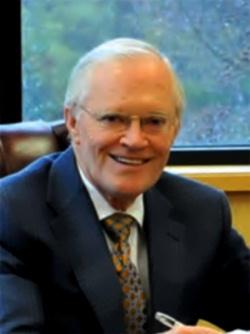The Man Who Worked with All His Might
When we think of the telephone and its inventor we likely think of Alexander Graham Bell.
On March 10, 1876, at the age of 29, Bell spoke to his fellow worker Watson positioned in another room, uttering the famous words over the new device that would change the world: “Mr. Watson—Come here—I want to see you.”
The process of research and experimentation that Bell had begun a number of years earlier had eventually culminated in what turned out to be a marvellous invention that turned words into electrical impulses that could be sent through a wire and turned back into words that could be heard at the other end. Thus, the device called the telephone was born. It seems that ingenuity and inventiveness was in Bell’s DNA!
His father Melville started commercializing the invention in Canada in 1878, and in 1880 the Bell Telephone Company of Canada was established. By 1886, a short six years later, more than 150,000 people in the U.S. owned telephones.
A Varied Life in Varied Lands
Born in Edinburgh, Scotland in 1847, Alexander Graham Bell would eventually reside at various times in the United Kingdom, the United States and Canada, and all three proudly claim him as their own.
If Bell were to provide a resume, it would have to include many titles. He was certainly an inventor and a scientist, making contributions in fields as far from communication as hydrofoil design and aeronautics. But he was also an educator, well known for his work with the deaf, conducting his own research on speech and hearing. In fact, he was known to proudly refer to himself as a “teacher of the deaf.” He eventually married one of his deaf students, Mabel Hubbard, in 1877, and together they had four children, though only two survived infancy.
Bell’s family background was a major contributing factor in his inventive genius and shaped his personal and professional life. His mother’s deafness and his father’s work as a speech therapist and interest in speech and elocution deeply influenced Bell. He and his father developed and improved a set of symbols to depict the spoken sounds—a system they called “Visible Speech,” which they felt could be used to teach the deaf to speak clearly. Such work helped to pave the way for his future work on the telephone.
The Canadian Connection
In his early years in Canada, he resided with his parents near Brantford, Ontario, on a farm overlooking the Grand River. He spent his summers there, alternating between Boston and Brantford. It was at that time in the early 1870s that Bell began his initial work on the harmonic telegraph and learned the language of the Mohawk Nation, recording it in writing using his Visible Speech system.
Alexander Graham Bell was an incredibly hard worker, often laboring late into the night. On the wall in the lab in which he toiled was a picture of an owl, given to him as a joke to reflect his tendency to work late into the night.
Being busy does not necessarily mean being productive. Yet Bell’s passion for discovery and invention, coupled with his focus and determination, showed that he was more than just busy—he was a productive individual, who turned dreams into realities.
Like any inventor does, he had failures and missteps. But this did not deter him from moving ahead. As he once observed, “When one door closes another opens; but we so often look so long and so regretfully upon the closed door, that we do not see the ones which open for us.” And as for persistence, Bell remarked, “In scientific researches, there are no unsuccessful experiments; every experiment contains a lesson. If we don’t get the results anticipated and stop right there, it is the man that is unsuccessful not the experiment.”
But Alexander Graham Bell’s life was filled with more than invention and discovery. He spent much of the last 35 years of his life with his wife Mabel and their two daughters on an estate he had purchased near the shores of Baddeck Bay. When their two daughters married and provided them with a complement of nine grandchildren, the Bell household was often quite full. “I do so love little children,” he once said, “and I like nothing better than being around them.”
The love he and his wife shared was clearly demonstrated in their final words to each other before his death. While at his bedside, Mabel whispered to him, “Don’t leave me.” He responded, “No,” in sign language, then lost consciousness and died.
A Biblical Work Ethic
The life of Alexander Graham Bell exemplified a work ethic taught clearly and firmly in God’s word. We can see in his example a reflection of King Solomon’s admonition to all of us, “Whatever your hand finds to do, do it with your might; for there is no work or device or knowledge or wisdom in the grave where you are going” (Ecclesiastes 9:10).
This “teacher of the deaf” certainly fulfilled these words from Scripture, not only looking for opportunities for personal growth and understanding, but also seeking to benefit the lives of others.
Bell’s life also illustrates another principle of hard work: “The soul of a lazy man desires, and has nothing; but the soul of the diligent shall be made rich” (Proverbs 13:4). To be sure, the inventor of the telephone was anything but lazy, and he seemed filled with a wonder about the world around him that resulted in a life rich in many ways. He once observed, “God has strewn our paths with wonders, and we shall certainly not go through life with our eyes shut.”
At the news of his death in 1922, the entire phone system in Canada and the United States ceased to operate for a moment of silence, in commemoration of his life and contribution to society.
We are living in an age in which technology is evolving at a rapid pace. Since Bell’s initial invention, mankind has developed a seemingly endless variety of forms and methods of communication. One wonders what Bell would think today of Bell Canada, a large telecommunications and media company—one of many that bear his name.
Bell had hoped long distance wires would eventually connect phones in various and distant cities, and by the year 1907 more than six million phones were in use. In 1915 the first coast-to-coast call was made between Bell and his friend and former assistant Thomas Watson. The call was from New York City to San Francisco, and Bell started the conversation by uttering the same words said to Mr. Watson many years before on March 10, 1876: “Mr. Watson—Come here—I want to see you.”
Let’s appreciate the determination, foresight, focus and remarkable work ethic by the man of three countries: inventor Alexander Graham Bell. Thanks to his efforts and dedication, communication improved for people all over the world. He truly was a man who “worked with all of his might”!






